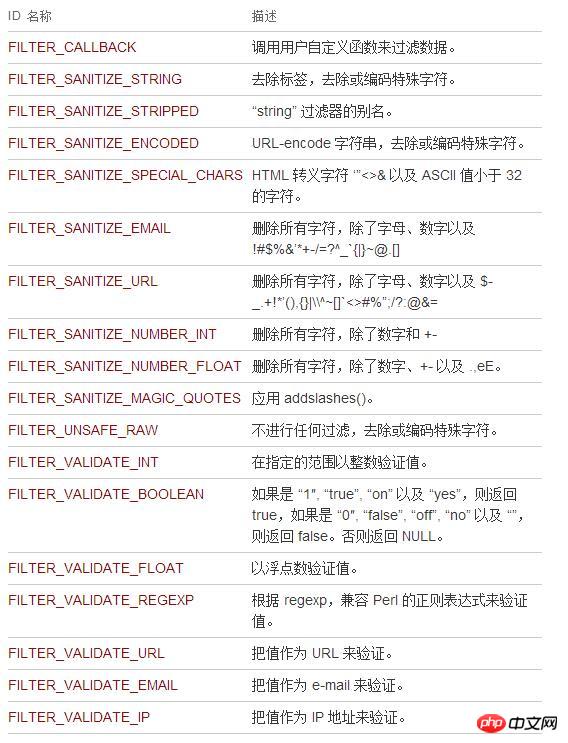
This article mainly introduces in detail PHP's own method to verify whether the mailbox exists, and PHP's own method to verify whether the URL and IP are legal. Interested friends can refer to it. I hope to be helpful.
There are many ways to verify email addresses in PHP. The most common one is to write regular expressions yourself. However, regular expressions are troublesome. PHP comes with its own method for verification.
filter_var
filter_var is a variable filtering method built into PHP. It provides many practical filters that can be used to check integers. , floating point number, email, URL, MAC address, etc.
If filter_var returns false, it means that the variable cannot pass the filter, which means it is illegal.
$email = "lastchiliarch@163.com"; var_dump(filter_var($email, FILTER_VALIDATE_EMAIL)); $email = "asb"; var_dump(filter_var($email, FILTER_VALIDATE_EMAIL)); $email = "1@a.com"; var_dump(filter_var($email, FILTER_VALIDATE_EMAIL));
Output:
##
string(21) "lastchiliarch@163.com" bool(false) string(7) 1@a.com
checkdnsrr
checkdnsrr is actually used to query the DNS record of the specified host. We can use it to verify whether the mailbox exists. For 1@a.com, the MX record definitely does not exist.$email = "lastchiliarch@163.com";
var_dump(checkdnsrr(array_pop(explode("@",$email)),"MX"));
$email = "1@a.com";
var_dump(checkdnsrr(array_pop(explode("@",$email)),"MX"));##
bool(true) bool(false)
filter_var+checkdnsrrWe can combine filter_var and checkdnsrr for verification. For most illegal mailboxes, filter_var will definitely be used. It hangs up, and you can use
checkdnsrr to further judge the rest.
$email_arr = array("lastchiliarch@163.com", "1@a.com");
foreach($email_arr as $email) {
if (filter_var($email) === false) {
echo "invalid email: $email \n";
continue;
}
if(checkdnsrr(array_pop(explode("@",$email)),"MX") === false) {
echo "invalid email: $email \n";
continue;
}
} Output:
invalid email: 1@a.com
But it should be noted that since it is only checking the MX record, so It can only be determined that 163.com exists, but it cannot prove that the user lastchiliarch exists.
filter_var function
.Syntax
filter_var(variable, filter, options)
variable Required. Specifies the variables to filter. filter Optional. Specifies the ID of the filter to use. options Specifies an array containing flags/options. Check the possible flags and options for each filter.
PHP Filters
Example #1 A filter_var() example
<?php var_dump(filter_var('bob@example.com', FILTER_VALIDATE_EMAIL)); var_dump(filter_var('http://example.com', FILTER_VALIDATE_URL, FILTER_FLAG_PATH_REQUIRED)); ?>
The above routine will output:
string(15) "bob@example.com" bool(false)
Related recommendations:
php Code to check if a number is odd or evenphp Code to check if a file or directory existsBasics and simple examples of PHP regular expressions
The above is the detailed content of PHP comes with a method to verify your email address. For more information, please follow other related articles on the PHP Chinese website!




